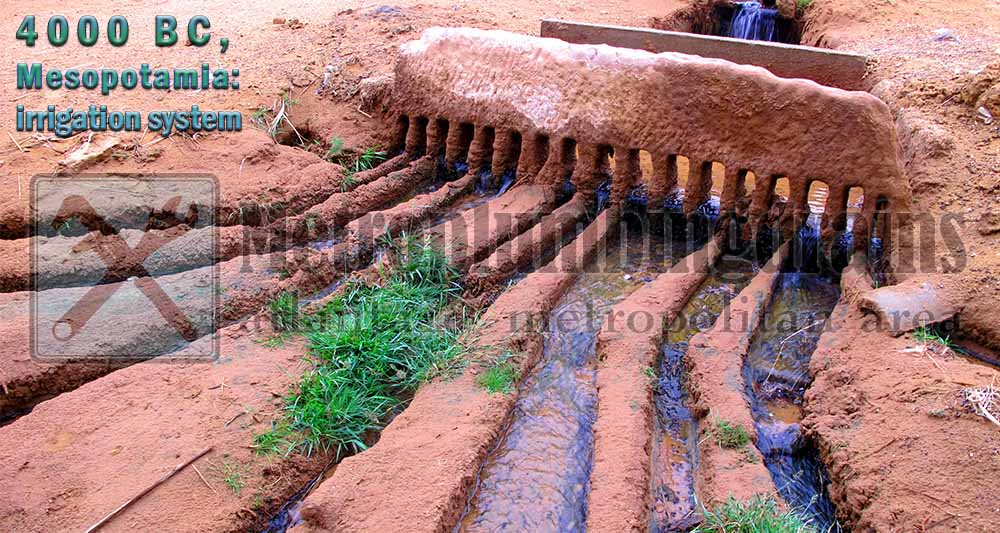Water, plumbing and sewage in people’s lives
Before plumbing and sewage, before irrigation, before anything else, is water. Water is vital to human life. The first major human settlements invariably arose near a constant source of fresh water, such as rivers and lakes. Seven thousand years before Christ, people began digging wells. Over the millennia of human history, water supplies and plumbing have evolved from stone and clay channels to the system we know today.
The first plumbing and sewage systems in world history
Around 4000 years BC, the ancient civilization of Mesopotamia was the first to use clay pipes for water supply. They also used wastewater for irrigation and fertilization.
The first archaeological finds in Europe relating to the beginnings of any plumbing and sewage systems date from around 3,500 BC. Ancient settlements with primitive plumbing for fresh and waste water have been found in Scotland. They used stone channels lined with tree bark.
Around 2700 BC, the first standardized clay pipes with wide flanges appeared along the river Indus. And asphalt was used to prevent leaks.
Copper pipes were first used in Egypt around 2400 BC.
The ancient Greeks were the first to develop the science of hot water.
The word “plumber” first appeared during the Roman Empire. The famous Roman baths led to the flourishing of this craft. The roots of the word come from the Latin name for lead: “plumbum”. In addition to the pipes in their baths, the Romans also used lead for the gutters on their roofs.
The history of plumbing and sewage in America
The Hohokam Indians inhabited the lands of present-day Chicago and the American Southwest. They were settlers and used irrigation canals as early as 350 B.C. This culture disappeared suddenly sometime around 1450. European colonisers did not contribute much to the development of the water system. It wasn’t until the mid-19th century that more advanced technologies and methods of building plumbing and sewerage in cities became established in America.
The main ‘culprit’ was industrialization and rapid population growth in cities. For example, Chicago’s population of 350 in 1835, grew to 60,000 by 1860. So, in 1869 the water tower was built in Chicago. It supplied the city with water through a system of twin-tunnels running 2 miles under Lake Michigan. The clean water entered an underwater shaft and from there reached the population through the tunnels. A huge vertical pipe, 138 feet high and 3 feet wide, equalised the pressure in the city’s water supply network. Steam engines acted as huge pumps that pumped water from the tunnel under the lake, providing 15 million gallons per day.
The first major plumbing project in the U.S. was created in Chicago, but the “fashion” in the industry in the country was imposed by another major city: New York.
The project by engineer Julius W. Adams
The first water supply system in New York was built in the mid-17th century and was a reservoir fed by wells and ponds, and distribution was by wooden pipes. Decades later, the pipes were now cast iron and the reservoir was above ground. The first fire hydrants with permanent access to water for firefighting also appeared. The irony of it all is that it was the Great Fire of 1835 that destroyed New York’s water system.
New York City continued to grow, and the city government made the decision to build a more advanced and robust pressurised system. The project was completed in 1842 and involved carrying water from the Croton Aqueduct 40 miles away to a second aqueduct north of the city and to a third in Central Park. The water moves through underground pipelines, and major buildings in the city can now be supplied with running water.
The city’s modern sewer system was built a few years later by Engineer Julius Adams. He built Brooklyn’s sewers, and his design became the model that other major cities followed.
NEXT: History of toilets and bathrooms in the U.S., and Atlanta, GA

